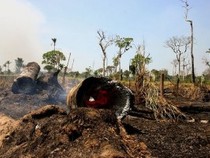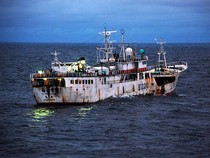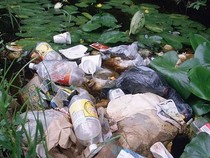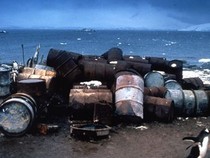Description
Second only to the trade in drugs and weapons, environmental crime is the largest illegal business in the world. It is global and often organised and transnational, and it is increasing. Even so, only a small portion of all breaches to environmental legislation is detected and leads to prosecution and conviction. Countering the problem will require targeted actions in the judicial systems, the security sector, industry, development aid and the research community, as well as improved normative harmonisation measures and enforcement coordination mechanisms.
Environmental crime typically refers to breaches of environmental laws or environmental conventions.[g1] These regulatory mechanisms are in place to minimise and manage harm to the environment and human health. Environmental crime mainly affects the environment and ecosystem services, the latter meaning the functions of ecosystems that benefit human beings, and it might affect other relevant interests such as competition.
Transboundary environmental crime, particularly illegal trade in animals and animal parts such as elephant tusks, but also that in hazardous wastes, is estimated to be one of the most widespread types of crime in the world. This type of illegal trade is global, organised, large-scale and transnational and is therefore attracting increased attention from actors such as the UN and the EU. The share of environmental crimes that are detected and solved is relatively low, and the profits can be substantial. For example, according to statistics from the Swedish National Crime Prevention Council (Brå), only in a fraction of all environmental crime cases reported in Sweden can a person be prosecuted and convicted states with low legal certainty the magnitude of the problem is greater.
Since environmental crime is rarely detected there are large gaps in knowledge about this growing type of crime. According to Interpol the international trend is similar[g1] in the areas of wildlife crime, illegal logging and timber trade, illegal fishing and the illegal trade in chemicals or hazardous wastes. There are also emerging types of environmental crime, for instance carbon credit fraud and criminal activities in the water sector. [1]
[1] Source: Annica Waleij, Birgitta Liljedahl, Kristoffer Darin Mattsson and Louise Simonsson, “The Role of Environmental Crime in Terrorism, Conflict and Criminality” in Strategic Outlook 2013, Magdalena Tham Lindell, Jerker Hellström, Lena Molin and Åke Wiss (eds.), Swedish Defence Research Agency (FOI), June 2013.
International Action
[Text in preparation]
Featured International Institutions
INTERPOL - Environmental Compliance and Enforcement Committee
Division of Environmental Law and Conventions (DELC)
Featured International Instrument
Aarhus Convention
Convention on Access to Information, Public Participation in Decision-Making and Access to Justice in Environmental Matters
EU Action
[Text in preparation]
Featured EU Institutions
EU - Council of the European Union - Justice and Home Affairs (JHA)
EU - European Commission - DG Environment
Featured EU Initiative
EFFACE
European Union Action to Fight Environmental Crime
Featured EU Instrument
EU Directive 2008/99/EC
Directive 2008/99/EC of the European Parliament and of the Council of 19 November 2008 on the protection of the environment through criminal law
Other Action
[Text in prepararation]
Role of Earth Observation
[Text in prepararation]


EFFACE is funded under the 7th Research Framework Programme of the European Union.
The contents of the EFFACE Environmental Crime Research and Action Guide website are the sole responsibility of EFFACE and can in no way be taken to reflect the views of the European Union.










